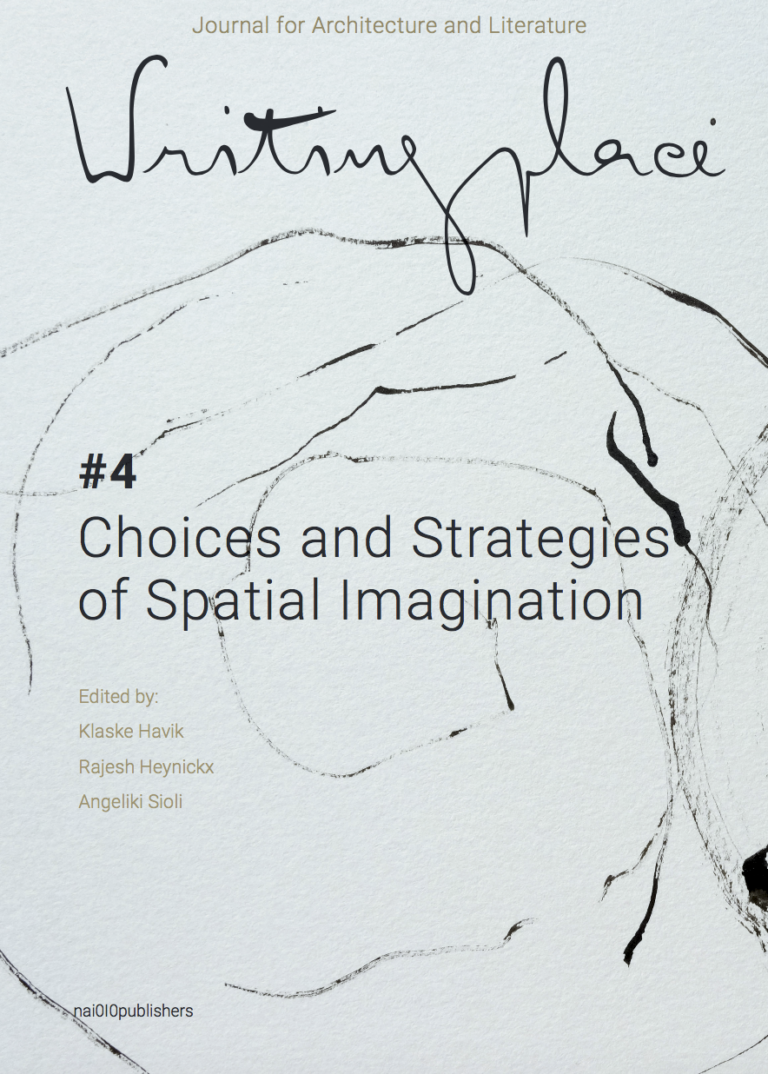Edited by Klaske Havik, Rajesh Heynickx and Angeliki Sioli.
The issue develops the premise that architecture is by definition an act of spatial imagination, this wondrous capacity to envision possible futures for the built environment. Spatial imagination is essential in order to visualize new constructions taking shape, evolving in time, and partaking of the cultural expression of a place or era. It takes spatial imagination to foresee how architecture can meaningfully contribute to people’s lives, providing a sense of belonging, space for their needs and dreams. Nonetheless, spatial imagination is oftentimes hard to trigger or difficult to control. Imaginative ideas often emerge unexpectedly, when seemingly unconnected or contradictory words, images and thoughts are brought together. With spatial imagination being an intrinsic aspect of architecture and design, but also deeply embedded in fields like literature or the arts, this fourth issue of Writingplace focuses on concepts, elements and theoretical foundations from different strands of knowledge that can propel choices and strategies of spatial imagination.
